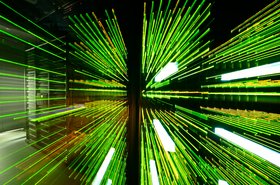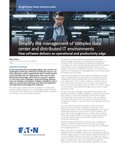As one of the world’s leading genome research facilities, the Wellcome Sanger Institute in Cambridge is contributing to the fight against the Covid 19 pandemic. Its expertise in improving the outcomes of human health using genomic sequencing data, and its history of collaborating with other research organizations across the world, are invaluable to the efforts to learn more about the virus. The Institute today is working on several projects in response to the crisis.
Behind each of the organizations based on the Wellcome Genome Campus is the on-premise data center, which remains fundamental to the cause. Comprising more than 400 racks and consuming 4MW of power, the Institute hosts the largest genomic research data center in Europe. It relies heavily on its on-site infrastructure, not only to process the sequencing data quickly and efficiently, but to ensure that appropriate IT resources and technologies are continuously deployed to satisfy the needs of the science.
All the while, the challenges posed by lockdown restrictions have meant the number of staff members allowed on site have been greatly curtailed. Visibility into the health and status of the power infrastructure and of the data center have therefore become critical for continuity; ensuring the science can continue uninterrupted both on-site and remotely.
Upgrades
Fortunately for the Wellcome Sanger Institute, the data center team continuously works to improve and incorporate rapidly evolving technologies. They include high-density storage systems, Nvidia DGX GPUs and sophisticated data center infrastructure management (DCIM) software systems that leverage AI and data analytics to ensure that downtime, where possible, is avoided at all costs.
From a visibility perspective, the latter offers great benefits, especially where accessibility is concerned. A key feature of the software is the ability to monitor all the data center’s infrastructure from a single console, providing insight into its health status via a secure smartphone application. For data center professionals restricted by lockdown conditions, remote monitoring and management has become an invaluable tool for maintaining mission-critical continuity.
The decision to utilize this technology, however, has not been driven by the pandemic. In fact, the tools were deployed long before that to streamline operational efficiency, provide a holistic view of a highly distributed campus and in time, to improve energy usage. Yet, from a remote access perspective, the conditions have further amplified the need for a greater level of insight from remote locations. Inevitably, it has also brought with it some challenges, personnel have had to adapt to new working methods, yet new digital tools have helped to overcome these issues.
One of the most immediate benefits is the realization that it is still possible to maintain optimum performance despite restricted access to the facility. For example, when on-site, personnel are able to physically check on key pieces of hardware. However, to ensure continuity from a remote location, having access to a virtual representation, which provides real-time system data securely to a smart device, becomes crucial.
In contrast, an increased reliance on software also offers personnel access to greater detail, which yields significant benefits in the long term. In particular, the speed at which decisions can be made and new IT upgrades or equipment installations have increased, thanks not just to the availability of the management software, but through the data and insights it provides.
It enables new technologies to be deployed, connected and monitored quickly within the data center, in some scenarios, weeks can be turned into days or hours, when compared with legacy systems. The DCIM also helps overcome stranded capacity and offers greater choice, in terms of location, for new research applications or AI platforms on campus.
The center needs adequate power to the racks, the right levels of cooling to IT and to securely verify the private network connections. Management ensures there is no disruption to existing research projects or campus IT operations.
This is possible, primarily, through the greater visibility offered through the DCIM platform and its remote monitoring – bringing together multiple disparate systems, with technologies from different manufacturers into a single pane view. Furthermore, the software enables the user to exploit its capabilities and quickly make decisions that deliver rapid results and ROI.
Skilled staff essential
However, the essential lesson learned from the greater reliance on remote monitoring and DCIM has been the importance of high-quality personnel. The need for skilled staff and expert partners is every bit as important as trusting that the technology will perform as planned.
So while the tools and technologies continue to play a major part in the ability to respond rapidly and ensure operational continuity for the organizations focused on finding positive outcomes to the health crisis, there is no doubt that real magic remains in the people who support the effort. Those who dedicate their lives to better understanding human health and disease.
From engineers to scientists and pharmaceutical organizations to trusted technology partners, the dedication of those professionals are really what makes the difference.
And in light of current circumstances, everyone must realize that when all is said and done, there is great value in recognizing the importance of trust, in greater diversity and in each other, safe in the acknowledgement that we are all in this, together.





